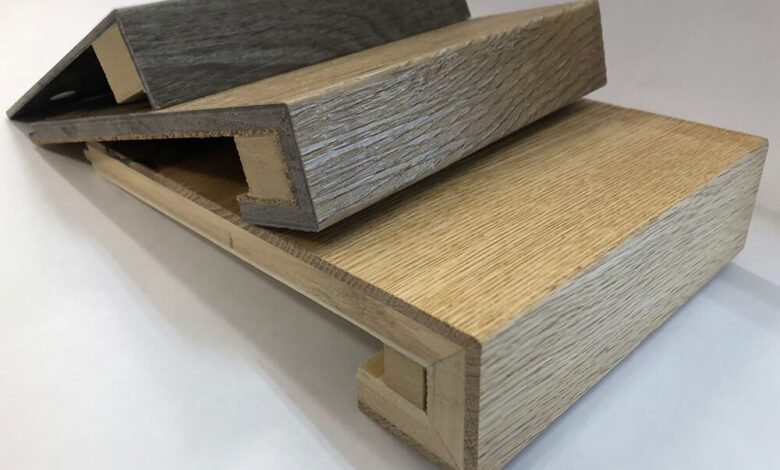Benefits Of Stair Nosing In UK

The stair nosing is an essential yet often overlooked component of any stairway. It refers to the horizontal piece that extends from the leading edge of each tread on the stairs. Stair nosing serves multiple important purposes related to aesthetics, safety, and building code requirements.
Stair Nosing Safety and Building Code Requirements
The installation of stair nosing is regulated by building codes for important safety reasons. Nosing codes aim to reduce the risk of trips, slips, and falls down stairs by establishing minimum dimensional standards.
Thickness:
Most building codes require a minimum thickness of 1/2″ to 3/4″ for Stair Nosing. Thinner styles lack sufficient mass and strength to withstand pressure from foot traffic over time.

Consistency:
Nosings along each flight of Stair Treads and throughout the entire building must be uniform in thickness, projection and installation method. Inconsistent dimensions could cause imbalance or unexpected steps that lead to falls.
Projection/Overhang:
The nosing must project past the vertical surface of the riser below it by a certain distance, usually 3/4″ minimum. Proper overhang assists in the definition of each tread, acting as a visual cue to help guide feet safely.
Installing Stair Nosing
Proper installation is important for stair nosing to stay securely in place and last for its intended lifespan. Here are the basic steps:
Surface Preparation
Clean the stair tread surface thoroughly using a vacuum and damp rag. Sand any rough areas to allow for better adhesion. Remove all dirt and debris that could prevent secure attachment.
Adhesive Selection
For wood nosings, use exterior-rated wood glue or construction adhesive. Metal nosings adhere well with siliconized acrylic caulk. Read product instructions and prepare substrate per recommendations.
Placement
Measure and mark the nosing location precisely per building code standards. Use a carpenter’s level to ensure even placement and consistent profile. Test fit before final securement to confirm proper alignment.
Attachment
For wood, set/clench finish nails or brad nails spaced 12 inches apart. Seal nail holes with wood filler for a sleek appearance. Metal adheres best using continuous beads of adhesive.
Finalizing
Wipe away excess adhesive before it dries fully. Allow proper curing time before use, usually 24 hours. Inspect the completed installation and re-attach any loose sections.
Maintaining and Replacing Stair Nosing
With regular use, stair nosings will eventually show wear over time. Maintaining and replacing them is important for aesthetics, safety, and code compliance:
Removing Old Nosing Material
Score around the edges with a utility knife and snap off pieces. Drill or grind out any remaining shards flush with the tread. Sand smooth and clean away debris before new installation.
Routine Maintenance
Sweep or vacuum nosings weekly to remove dirt. Wipe down with a damp microfiber cloth as needed. Use a mild soap for tougher cleaning of metal, tile, or vinyl. Buff out scuffs on wood with a fine-grit sandpaper.
Signs it’s Time for Replacement
Deep scratches, gouges, or grooves worn into the surface. Visible cracking, splitting, or splintering of wood nosing. Loose, flaking, or missing pieces that create a trip hazard. Dull, faded, or worn appearance that detracts from curb appeal.
Choosing Stair Nosing Profiles
Beyond material selection, careful consideration of stair nosing profile is important for safety, design, and code approval. Here are some common options:
Rounded Profile
Classically used for wood treads and nosing applications. The smooth rounded shape feels comfortable underfoot. Provides continuous contact with the shoe or foot surface area.
Beveled Profile
Creates angled nosing edges that are still gentle to walk on. Offers a sleeker modern appearance than rounded edges. Still prevents the toe from catching if the weight is shifted forward.
Bullnose Profile
Square front edges with rounded corners maintain traction. Excellent for high-traffic areas that see heavy foot traffic. Available for resilient flooring like tiles or laminates.
Read More Articles From: https://midnu.com/



